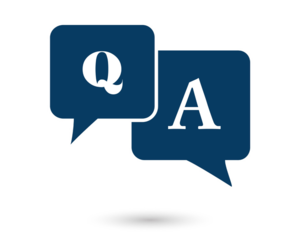“What are the surgical options for removing nasal polyps?”
I have nasal polyps. What are the surgical options for removing nasal polyps?
2 Answers
Ear,NoseandThroatDoctor(ENT)Ear,NoseandThroat(ENT)
At one time in the past you may have been able to have polyps removed as an office procedure but I doubt that is an option today, Surgery consists of removal of the polyps with a snare or other surgical instrument. sometimes portion of a sinus wall might need to be removed in order to get to the base of the polyp. I am not sure this answers your question. ..
For patients suffering from nasal polyps, treatment often involves a combination of surgical interventions and biologic therapies, depending on the severity of the condition and the patient’s response to prior treatments. Surgery remains a cornerstone for addressing significant obstruction or recurrent symptoms, while biologics are increasingly used for long-term management in refractory cases.
The most common surgical approach is Functional Endoscopic Sinus Surgery (FESS), a minimally invasive procedure that removes polyps and opens up sinus passages using an endoscope. This technique not only restores nasal airflow but also improves drainage and reduces the likelihood of polyp recurrence. FESS is highly effective, with many patients experiencing significant relief from symptoms such as congestion and loss of smell. Recovery is typically smooth, with same-day discharge and minimal postoperative discomfort, although some congestion and minor bleeding may persist for a few days.
For milder cases or those seeking less invasive options, balloon sinuplasty may be considered. This procedure involves inflating a small balloon catheter to widen sinus openings. While it is less invasive than FESS, its efficacy is more limited, particularly in cases of severe or extensive polyps. In rare, complex cases, procedures like the Caldwell-Luc operation may be performed to create new drainage pathways, though this is generally reserved for patients with recurrent or severe disease. Additionally, adjunctive procedures such as septoplasty (to correct a deviated septum) or turbinectomy (to reduce turbinate size) may be performed to further improve airflow and reduce the risk of polyp formation.
Despite the success of surgery, nasal polyps can recur in up to 40% of patients within five years. For these individuals, biologic therapies offer a promising solution by targeting the underlying inflammation responsible for polyp growth. Among the biologics available, dupilumab, which blocks IL-4 and IL-13 signaling pathways, has emerged as a leading option. Clinical studies have shown that dupilumab can reduce polyp size by approximately 50%, alleviate congestion, and even restore the sense of smell in many patients. Another option is omalizumab, which targets IgE and has been shown to improve nasal symptoms and quality of life. Additionally, mepolizumab, an IL-5 inhibitor, has demonstrated efficacy in reducing polyp burden, though it is currently used off-label for this purpose.
Biologics are typically reserved for patients whose polyps recur after surgery or who do not respond adequately to intranasal corticosteroids. While these medications are highly effective often reducing the need for repeat surgery by as much as 80%. Side effects are generally mild and may include injection-site reactions or upper respiratory infections.
For many patients with severe or refractory nasal polyps, a combined approach offers the best outcomes. Surgery provides immediate relief by removing obstructions and improving sinus drainage, while biologics help prevent recurrence by addressing the underlying inflammatory pathways. Together, these strategies can significantly improve quality of life and reduce the long-term burden of nasal polyps.
The most common surgical approach is Functional Endoscopic Sinus Surgery (FESS), a minimally invasive procedure that removes polyps and opens up sinus passages using an endoscope. This technique not only restores nasal airflow but also improves drainage and reduces the likelihood of polyp recurrence. FESS is highly effective, with many patients experiencing significant relief from symptoms such as congestion and loss of smell. Recovery is typically smooth, with same-day discharge and minimal postoperative discomfort, although some congestion and minor bleeding may persist for a few days.
For milder cases or those seeking less invasive options, balloon sinuplasty may be considered. This procedure involves inflating a small balloon catheter to widen sinus openings. While it is less invasive than FESS, its efficacy is more limited, particularly in cases of severe or extensive polyps. In rare, complex cases, procedures like the Caldwell-Luc operation may be performed to create new drainage pathways, though this is generally reserved for patients with recurrent or severe disease. Additionally, adjunctive procedures such as septoplasty (to correct a deviated septum) or turbinectomy (to reduce turbinate size) may be performed to further improve airflow and reduce the risk of polyp formation.
Despite the success of surgery, nasal polyps can recur in up to 40% of patients within five years. For these individuals, biologic therapies offer a promising solution by targeting the underlying inflammation responsible for polyp growth. Among the biologics available, dupilumab, which blocks IL-4 and IL-13 signaling pathways, has emerged as a leading option. Clinical studies have shown that dupilumab can reduce polyp size by approximately 50%, alleviate congestion, and even restore the sense of smell in many patients. Another option is omalizumab, which targets IgE and has been shown to improve nasal symptoms and quality of life. Additionally, mepolizumab, an IL-5 inhibitor, has demonstrated efficacy in reducing polyp burden, though it is currently used off-label for this purpose.
Biologics are typically reserved for patients whose polyps recur after surgery or who do not respond adequately to intranasal corticosteroids. While these medications are highly effective often reducing the need for repeat surgery by as much as 80%. Side effects are generally mild and may include injection-site reactions or upper respiratory infections.
For many patients with severe or refractory nasal polyps, a combined approach offers the best outcomes. Surgery provides immediate relief by removing obstructions and improving sinus drainage, while biologics help prevent recurrence by addressing the underlying inflammatory pathways. Together, these strategies can significantly improve quality of life and reduce the long-term burden of nasal polyps.




